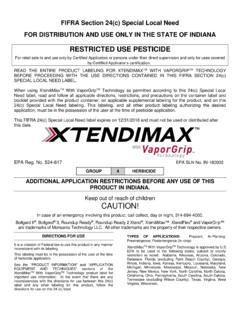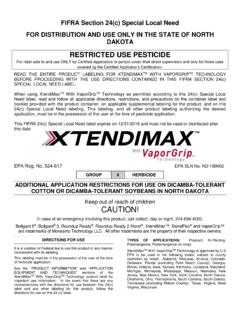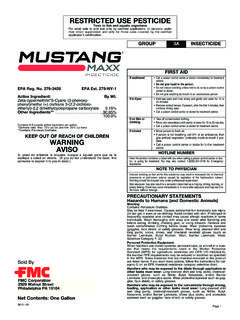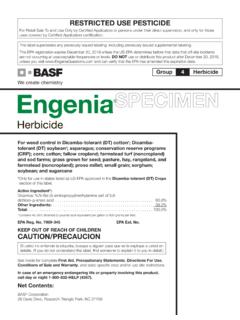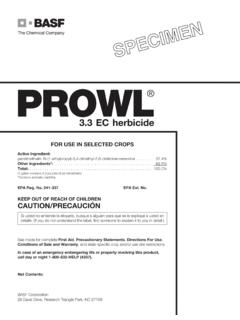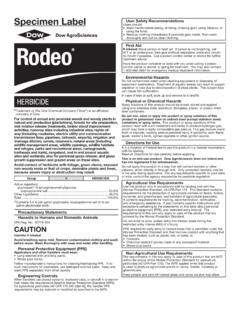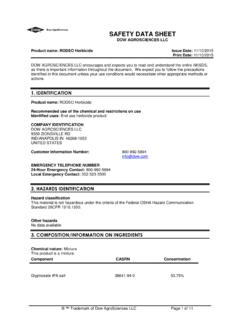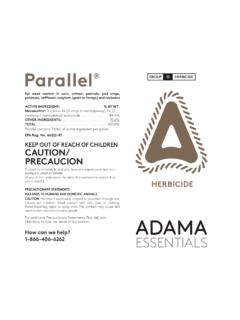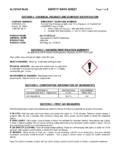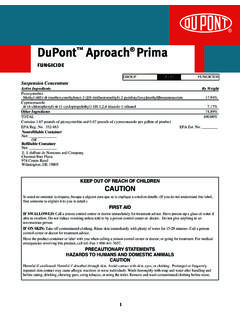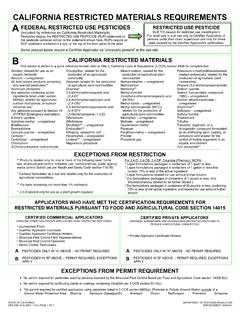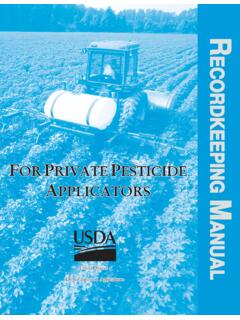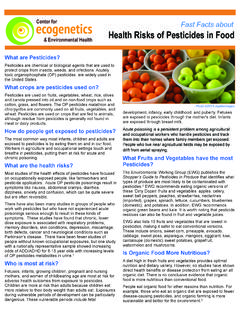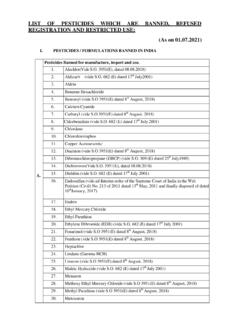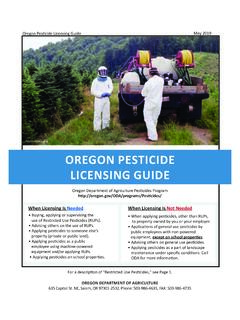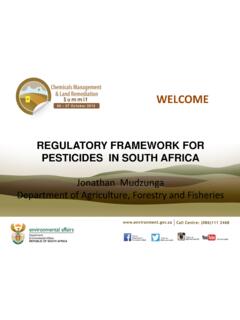Transcription of 2,4-D AMINE - CDMS
1 12,4-D AMINE A SELECTIVE WEED KILLERS pecimen LabelFor control of many broadleaf weeds and brush control in corn (field, pop and sweet), sorghum (Milo), soybeans (preplant), small grains (barley, millet, oats, rye, wheat), rice, sugarcane, fallow land, grasses, stone fruits and nut orchards, brush control, pastures, rangelands, forest management and in non-crop areas such as lawns and ornamental turf, drainage ditchbanks, fence rows and rights-of-way. Also for aquatic weed control, control of trees by injection, and tank INGREDIENT:Dimethylamine Salt of 2,4-Dichlorophenoxyacetic Acid*.
2 INGREDIENTS: .. TOTAL: .. Specific AOAC Method, Equivalent to:*2,4-Dichlorophenoxyacetic Acid , Reg. No. 81927-38 KEEP OUT OF REACH OF CHILDRENDANGER/PELIGROSi usted no entiende la etiqueta, busque a alguien para que se la explique a usted en detalle. (If you do not understand the label, find someone to explain it to you in detail.)FIRST AIDIf in eyes: Hold eye open and rinse slowly and gently with water for 15-20 minutes. Remove contact lenses, if present, after the first 5 minutes, then continue rinsing eye.
3 Call a poison control center or doctor for treatment swallowed: Call a poison control center or doctor immediately for treatment advice. Have person sip a glass of water if able to swallow. Do not induce vomiting unless told to do so by a poison control center or doctor. Do not give anything by mouth to an unconscious on skin or clothing: Take off contaminated clothing. Rinse skin immediately with plenty of water for 15-20 minutes. Call a poison control center or doctor for treatment inhaled: Move person to fresh air.
4 If person is not breathing, call 911 or an ambulance, then give artificial respiration, preferably by mouth-to-mouth, if possible. Call a poison control center or doctor for further treatment LINE NUMBERHave the product container or label with you when calling a poison control center or doctor, or going for treatment. You may also contact 1-800-424-9300 for emergency medical treatment TO PHYSICIANP robable mucosal damage may contraindicate the use of gastric for:Alligare, LLC13 N. 8th StreetOpelika, AL 36801 PRECAUTIONARY STATEMENTSHAZARDS TO HUMANS AND DOMESTIC ANIMALSDANGER - PELIGROCORROSIVE.
5 Causes irreversible eye damage. Harmful if swallowed. Harmful if absorbed through skin. Do not get in eyes or on clothing. Avoid contact with skin. Wear protective eyewear (goggles, face shield, safety glasses), long-sleeved shirt and long pants, shoes and socks, chemical resistant gloves. PERSONAL PROTECTIVE EQUIPMENT (PPE)Some materials that are chemical-resistant to this product are barrier laminate, butyl rubber 14 mils, nitrile rubber 14 mils or viton 14 mils. All mixers, loaders, applicators, flaggers, and other handlers must wear.
6 Eye protection (goggles, face shield or safety glasses) Long-sleeved shirt and long pants Shoes plus socks, plus Chemical-resistant gloves (except for applicators using groundboom equipment, pilots and flaggers), and Chemical-resistant apron when mixing or loading, cleaning up spills or equipment, or otherwise exposed to the engineering controls for additional manufacturer s instructions for cleaning/maintaining PPE. If no such instructions for washables exist, use detergent and hot water.
7 Keep and wash PPE separately from other laundry. After each day of use, clothing or PPE must not be reused until it has been Control Statements:Pilots must use an enclosed cockpit that meets the requirements listed in the WPS for agricultural pesticides [40 CFR (d)(6)]. When handlers use closed systems, enclosed cabs, or aircraft in a manner that meets the requirements listed in the Worker Protection Standard (WPS) for agricultural pesticides [40 CFR (d) (4-6)], the handler PPE requirements may be reduced or modified as specified in the SAFETY RECOMMENDATIONSU sers should: Wash hands before eating, drinking, chewing gum, using tobacco or using the toilet.
8 Remove clothing/PPE immediately if pesticide gets inside. Then wash thoroughly and put on clean clothing. If pesticide gets on skin, wash immediately with soap and water. Remove PPE immediately after handling this product. Wash the outside of gloves before removing. As soon as possible, wash thoroughly and change into clean HAZARDSThis pesticide may be toxic to fish and aquatic invertebrates and may adversely affect non-target plants. Do not apply directly to water, or to areas where surface water is present, or to intertidal areas below the mean high water mark except as noted on appropriate labels.
9 Drift and runoff may be hazardous to aquatic organisms in water adjacent to treated areas. Do not contaminate water when disposing of equipment wash water or rinsate. This chemical has properties and characteristics associated with chemicals detected in groundwater. The use of this chemical in areas where soils are permeable, particularly where the water table is shallow, may result in groundwater contamination. Application around a cistern or well may result in contamination of drinking water or Aquatic Uses: Fish breathe dissolved oxygen in the water and decaying weeds also use oxygen.
10 When treating continuous, dense weed masses, it may be appropriate to treat only part of the infestation at a time. For example, apply the product in lanes separated by untreated strips that can be treated after vegetation in treated lanes has disintegrated. During the growing season, weeds decompose in a 2 to 3 week period following treatment. Begin treatment along the shore and proceed outwards in bands to allow fish to move into untreated areas. Waters having limited and less dense weed infestations may not require partial FOR USEIt is a violation of Federal law to use this product in a manner inconsistent with its labeling.
